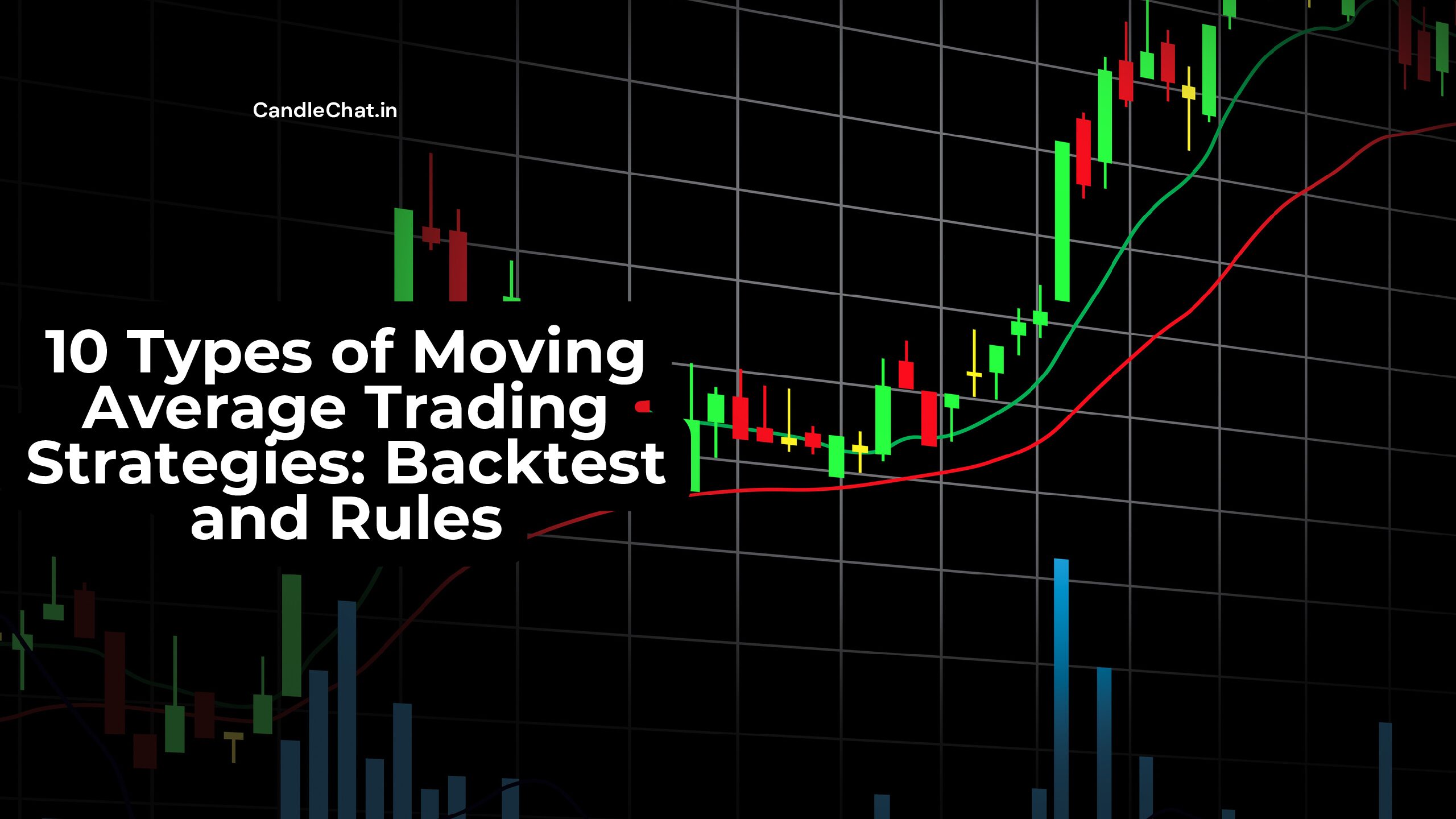Moving averages (MAs) are among the most widely used tools in technical analysis. From beginners to professional traders, everyone relies on moving averages to identify trends, support/resistance zones, and trading opportunities.
But here’s the catch: not all moving average strategies are the same. Different approaches suit different styles of trading—whether intraday scalping, swing trading, or long-term investing.
In this article, we’ll cover 10 powerful moving average trading strategies—their rules, practical examples, and insights from backtesting. By the end, you’ll know exactly how to use moving averages more effectively in your own trading.
What is a Moving Average?
A moving average smooths out price fluctuations to reveal the underlying trend. Instead of focusing on daily price noise, it shows a cleaner picture of whether the market is trending up, down, or sideways.
Common Types of MAs:
- Simple Moving Average (SMA): Equal weight to all periods.
- Exponential Moving Average (EMA): Greater weight to recent prices (faster response).
- Weighted Moving Average (WMA): Custom weights, but less common.
10 Moving Average Trading Strategies
1. Single Moving Average Trend-Following
- Rule: Trade only in the direction of the MA.
- Price above MA → Buy.
- Price below MA → Sell/short.
- Best for: Beginners & swing traders.
- Backtest Insight: Works well in trending markets, but weak in sideways conditions.
2. Golden Cross & Death Cross Strategy
- Golden Cross: 50-day MA crosses above 200-day MA → Bullish.
- Death Cross: 50-day MA crosses below 200-day MA → Bearish.
- Best for: Long-term trend followers.
- Backtest Insight: Historically profitable in equity indexes, but with late entries.
3. Dual Moving Average Crossover
- Rule: Use a fast MA and a slow MA.
- Fast MA crosses above slow MA → Buy.
- Fast MA crosses below slow MA → Sell.
- Example: 9 EMA and 21 EMA crossover.
- Best for: Swing & intraday traders.
- Backtest Insight: Frequent whipsaws in range-bound markets.
4. Triple Moving Average Strategy
- Rule: Use three MAs (short, medium, long).
- Example: 9 EMA, 21 EMA, 50 EMA.
- Bullish trend confirmed when all are aligned upward.
- Best for: Trend confirmation.
- Backtest Insight: Reduces false signals compared to dual crossovers.
5. Moving Average Pullback Strategy
- Rule: In an uptrend, buy when price pulls back to MA. In downtrend, short at pullback.
- Best for: Swing & position traders.
- Backtest Insight: Provides better risk-reward compared to chasing breakouts.
6. Moving Average as Dynamic Support & Resistance
- Rule: Use EMA (20 or 50) as a trendline.
- Price bounces on MA in strong trends.
- Best for: Trend continuation setups.
- Backtest Insight: Highly effective in strong trending stocks like NIFTY, NASDAQ leaders.
7. Moving Average Channel Strategy
- Rule: Create two MAs (upper & lower band).
- Example: 20 SMA ± 2 standard deviations (like Bollinger Bands).
- Buy at lower band, sell at upper band.
- Best for: Range-bound markets.
- Backtest Insight: Profitable in sideways conditions where crossovers fail.
8. EMA Scalping Strategy
- Rule: On 1-min or 5-min chart, use 9 EMA & 21 EMA crossover.
- Entry only in the direction of higher time frame trend.
- Best for: Intraday scalpers.
- Backtest Insight: Works in high-volume stocks, but requires discipline due to noise.
9. Moving Average Ribbon Strategy
- Rule: Plot multiple EMAs (e.g., 9, 13, 21, 34, 55).
- When ribbon aligns upward → Strong bullish trend.
- Ribbon compression → Trend reversal signal.
- Best for: Swing & positional trading.
- Backtest Insight: Provides excellent visual confirmation of trend strength.
10. 200-Day Moving Average Long-Term Investing Strategy
- Rule:
- Price above 200-day MA → Stay invested.
- Price below 200-day MA → Stay out or hedge.
- Best for: Long-term investors.
- Backtest Insight: Protects from big crashes (like 2008, 2020), though exits can be late.
Backtest Results – What Works Best?
Backtesting across stocks and indexes shows:
- Single MA & 200-day MA strategies → Great for long-term investors.
- Dual/Triple MA crossovers → Good for swing traders, but prone to whipsaws.
- Pullback & dynamic support/resistance → Strong results when combined with candlestick patterns.
- Scalping & channel strategies → Better suited for experienced intraday traders.
Key Lesson: No single MA strategy works in all conditions. Adapt based on whether the market is trending or sideways.
Risk Management Rules
- Always set a stop-loss below/above MA.
- Avoid trading every crossover—filter with volume or higher time frame trend.
- Risk only 1–2% per trade.
- Backtest strategies on your asset before applying real capital.
Conclusion
Moving averages may seem simple, but they remain one of the most versatile tools in trading. Whether you are a beginner or a seasoned trader, MA strategies can help you spot trends, time entries/exits, and manage risks effectively.
The key is to choose the right strategy for the market condition:
- Use crossovers and ribbons for trending markets.
- Use channels and pullbacks for sideways markets.
- Always confirm with price action, volume, or other indicators.
FAQs on Moving Average Trading Strategies
Q1. Which moving average is best for day trading?
The 9 EMA and 21 EMA combination is popular among intraday traders.
Q2. Is SMA better than EMA?
EMA reacts faster to price changes, making it better for short-term trading. SMA works well for long-term trend analysis.
Q3. Can moving averages be used alone?
They are best combined with price action, support/resistance, or volume.
Q4. What time frame is best for moving averages?
Intraday: 1-min, 5-min, 15-min charts.
Swing: Daily charts.
Investing: Weekly or monthly charts with 200 MA.
Q5. Do moving average strategies guarantee profits?
No strategy guarantees profits. MAs work best with risk management and proper backtesting.


